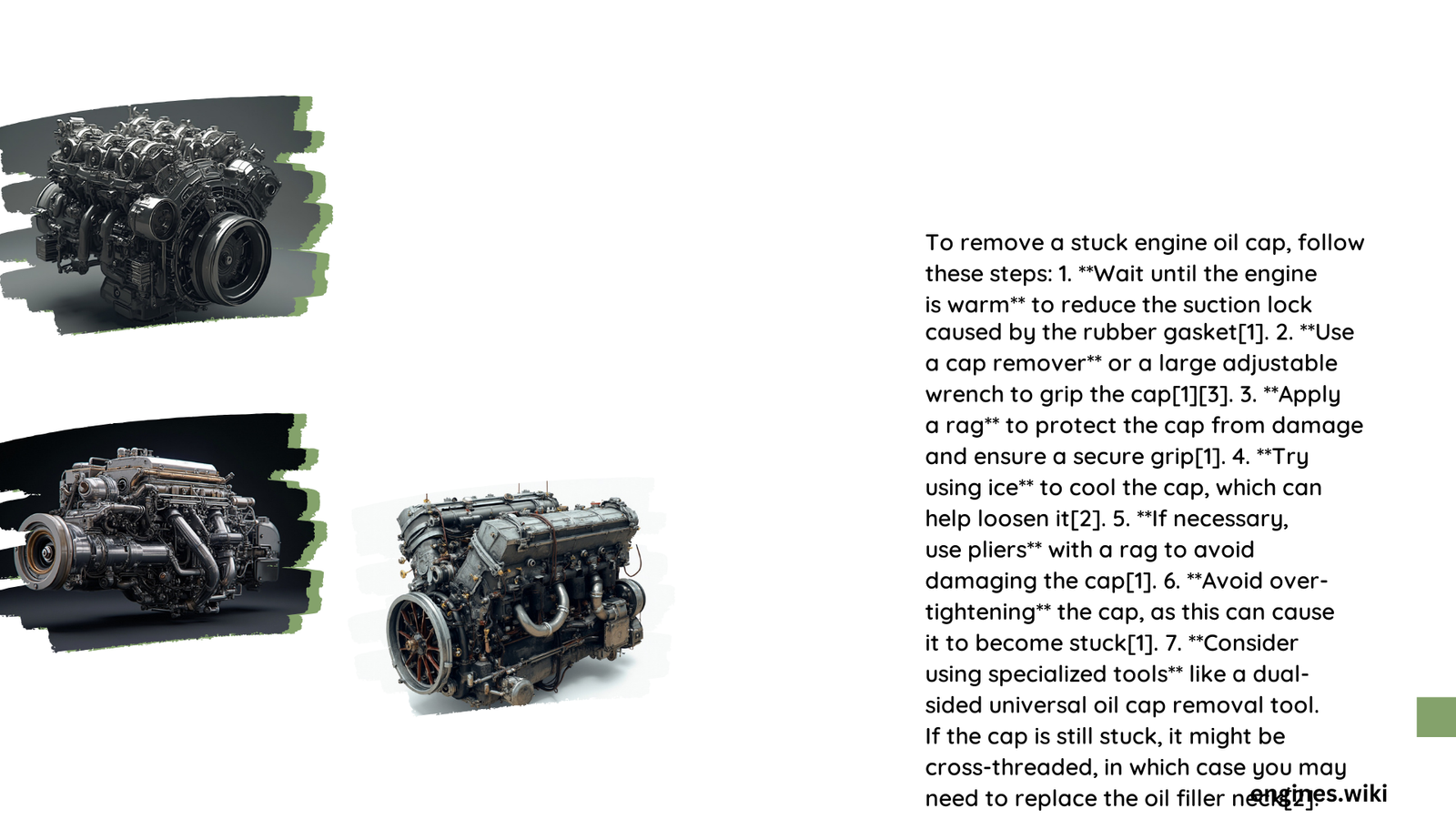Dealing with a stuck engine oil cap can be frustrating for vehicle owners. This persistent problem occurs due to various factors like temperature changes, oil residue buildup, and material degradation. Understanding the root causes and employing the right techniques can help you successfully remove the cap without causing damage to your vehicle’s engine components.
What Causes an Engine Oil Cap to Get Stuck?
Environmental Challenges
Vehicle engines experience significant temperature fluctuations that can impact the oil cap’s functionality:
- Heat Expansion: Metal and rubber components expand and contract
- Moisture Accumulation: Creates additional friction and potential corrosion
- Oil Oxidation: Leads to residue buildup around the cap’s seal
Material Degradation Factors
| Factor | Impact | Potential Solution |
|---|---|---|
| Rubber Gasket Wear | Increased Friction | Regular Replacement |
| Chemical Breakdown | Seal Hardening | Periodic Inspection |
| Oxidized Oil Residue | Adhesive Effect | Consistent Maintenance |
How to Remove a Stuck Engine Oil Cap?

Recommended Tools and Techniques
Essential tools for removing a stuck engine oil cap include:
- Specialized Cap Removal Tool
- Designed specifically for oil cap extraction
- Minimizes potential damage
-
Provides precise leverage
-
Channel Lock Pliers
- Adjustable grip
- Recommended with protective cloth
- Prevents surface scratching
Step-by-Step Removal Process
Preparation
- Ensure engine is warm but not hot
- Clean surrounding area
- Use protective gloves
Removal Technique
- Apply gentle, consistent pressure
- Rotate counterclockwise
- Use lubrication if necessary
Prevention Strategies
Maintenance Best Practices
- Regular Oil Changes: Prevents residue accumulation
- Proper Cap Installation: Avoid over-tightening
- Annual Seal Inspection: Check for degradation
- Use Recommended Lubricants: Maintain seal flexibility
Professional Intervention
When to Seek Expert Help
Consider professional assistance if:
– DIY methods fail
– Visible cap or seal damage
– Unusual resistance during removal
Estimated Costs
| Service Type | Approximate Cost |
|---|---|
| DIY Repair | $0 – $20 |
| Professional Service | $50 – $150 |
Critical Warning Signs
Indicators of Potential Issues
- Persistent oil leakage
- Unusual engine noise
- Visible seal deterioration
Technical Insights
Metallurgical Considerations
- Different metal expansions
- Thermal conductivity variations
- Material compatibility
Final Recommendations
Successful engine oil cap management requires:
– Consistent maintenance
– Proper technique
– Understanding mechanical principles
Pro Tip: Always consult your vehicle’s manual for specific guidance tailored to your make and model.
References:
– Automotive Maintenance Guide
– Professional Mechanic Resources
– Engine Repair Techniques
